Cutting, Pasting, Cloning, and GMOs
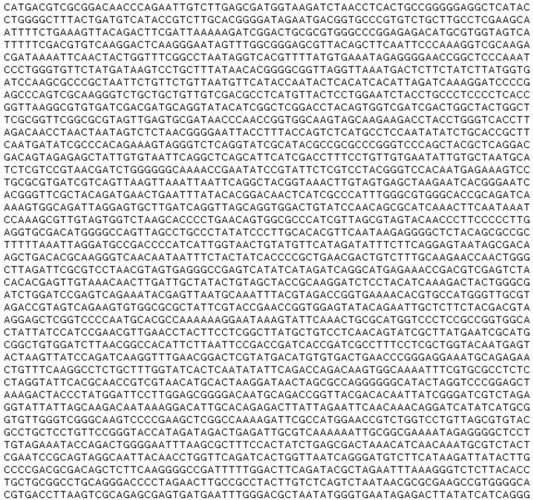
Like ancient Greek writing, DNA code got no spaces.
Source: Wikimedia Commons contributors
Curtain open
You may know that your computer runs on code that's made up of zeros and ones. And you may be able to tell your computer apart from your desk. But it doesn't mean you know which part in a long line of zeroes and ones codes your internet browser, and which part codes your desktop, and which part codes your crypto wallet.
Things stood similarly for DNA in the 60s: scientists knew the genetic code was made up of 4 letters, they could purify DNA away from other molecules, but they couldn't tell you which genes coded for your eye-color, which ones coded for your height, or which ones coded for your degenerative disease that you always wanted to be rid of. It was all just a long line of 4 letters stuck together, with no clear lines indicating where one gene ended and another began, so no way to tell the sequence of a gene, much less what it did.
That all changed when scientists came up with methods to cut, paste, and then clone DNA.
Cutting DNA: Bacteria vs Viruses
First of all we need a way to cut the gene from all the rest of the DNA. A gene, after all, is only part of the DNA, and we need a way to cut that part out.
Luckily for us, bacteria already had a way to do this. Due to their perennial war against viruses, bacteria used an enzyme that cut DNA in order to fight these invaders.[1] Using an enzyme called a restriction enzyme, the bacterium basically cuts up the virus' DNA, making it nonfunctional. More specifically, the enzyme targets a particular DNA sequence (called a recognition site), and cuts it.

Meet Sticky and Blunt. Blunt tells it like it is, and Sticky sticks it to the man.
Source: Wikimedia Commons contributors a & b, modified
Since all DNA is made up of only 4 letters, those letters are bound to come up in the bacterium's own DNA. So the bacterium protects its own DNA by another enzyme, a methyltransferase, in a process called methylation.[2] It's basically saying, "don't cut this", much like a "do not disturb" sign on a hotel doorknob says "don't clean, we're not done making a mess yet".
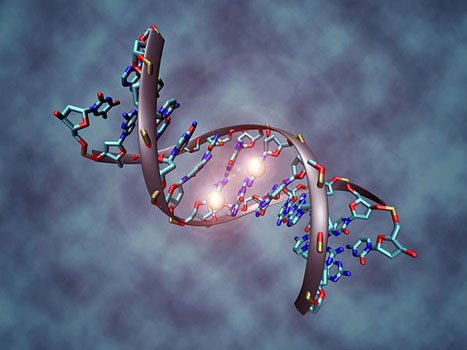
DNA, either getting methylated, or else having two great ideas at the same time.
Source: Wikimedia Commons contributors
Pasting DNA
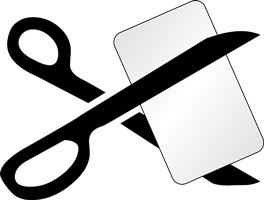
Are you a cut or a paste person? Cut people are said to be more neurotic and live alone in apartments, while paste people are said to be more sociable, affectionate, and handsome.
Source: Pixabay
As avid "cut" practitioners know, there's not much point to a cut unless it's followed by a "paste". But paste how? And paste where?
Since we'll later be needing to make more of this DNA sequence fragment that we cut, it makes sense to paste it into something that can be replicated. That's where plasmids come in. Plasmids are DNA molecules that are present alongside the bacterium's regular DNA.

Plasmid depicted on a Plasma. Because why not?
Source: Wikimedia Commons contributors & Pixabay, modified
Don't get too fond of plasmids. They're the ones "largely responsible for the proliferation of antibiotic resistance during the second half of the twentieth century."[3] You see, by a process called bacterial conjugation, which is filed under the more commonly heard horizontal gene transfer, these plasmids basically move from bacterium to bacterium, conferring their properties along with them, much like my mom carries the whole house in her suitcase whenever she travels.
This whole horizontal transferring deal however means that we can use these plasmids to cut them and paste our genetic fragment into them, then put them alongside bacteria, where they will proceed to gobble up these plasmids, and our genetic fragment with them, and then replicate, increasing our fragments for uses to be revealed later on in this post.
But, although we know how to cut these plasmids and our DNA fragments, how do we join them? This is done by DNA ligase. The ligase ligates (joins) the two DNAs together.
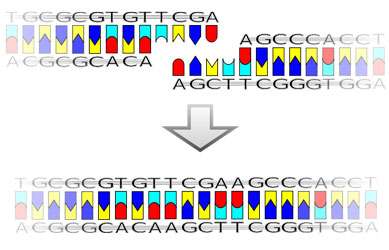
You can see the whole cutting and pasting business summarized very briefly in this animation here.
Source: Wikimedia Commons contributors
So this is how it looks when we do this on plasmids:
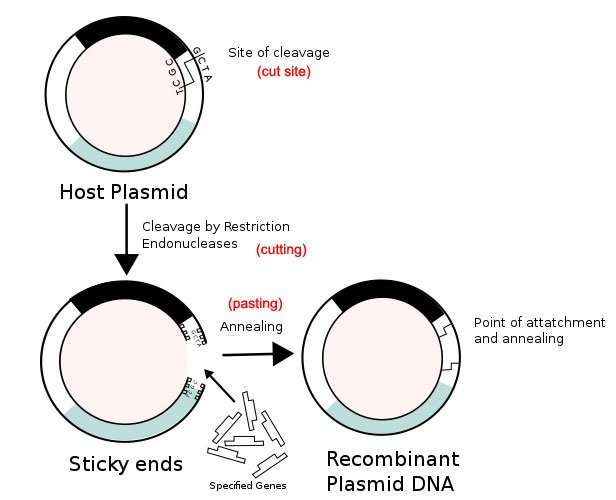
Source: Wikimedia Commons contributors, modified
The DNA of these plasmids is called recombinant DNA, and the resulting plasmids themselves are called, not unreasonably, recombinant plasmids.
Now how do we clone these and, more importantly, why?
Cloning DNA
Though cloning tends to evoke images of Dolly the Sheep, this is not what biologists mean when they talk about DNA cloning. To clone DNA means simply to make exact copies of it, not to duplicate Hitler.
First, we convince the bacteria to take up our plasmids by smooth-talking them. If that doesn't work, we use heat-shock[6] or some other process. (Hey, we tried nice but they wouldn't listen.)
Then, we plate them on an agar plate with nutrients and allow them to grow into a colony. (See? The Cosa Nostra takes care of you.)
But wait. How can we tell between the bacteria that took up the plasmids and the ones that didn't? We don't want to grow just any bacteria. Only the ones that yielded to the familia.
This is done by adding a step I skipped. It's the same as everything that was done before, only we add another DNA sequence: one that, for instance, confers antibiotic resistance. Now our plasmids are antibiotic resistant, and they confer this property to our bacteria. And now, we add the antibiotic to our agar plate. And now, the only bacteria that grow are the ones in which this whole cutting and pasting business was a success.
Here's the whole process summarized by someone's impeccably lifelike drawing skills:
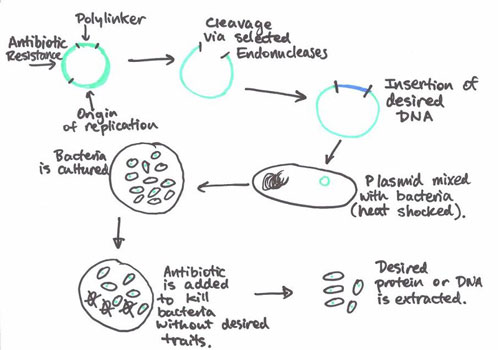
If you look close, you'll realize this is actually a drawing.
Source: Wikimedia Commons contributors
What for?
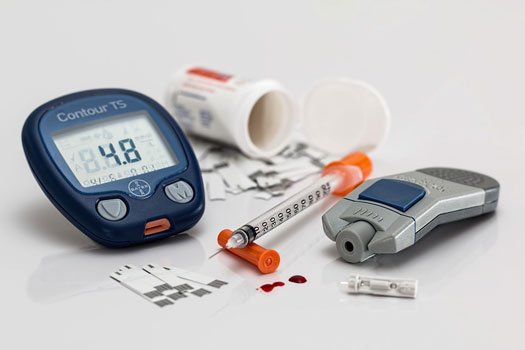
Source: Pixabay
This is not just a question that troubles existentialists. People who are reading this post might be asking themselves the same question. "I could've watched Westworld", they might add.
Recombining DNA and cloning it has many applications.[9] Your DNA fragment of interest might be the one that makes insulin. You may use the bacteria as insulin-producing factories to make insulin for diabetics. Or you may treat certain types of hemophilia and strokes with it. You may do gene therapy.
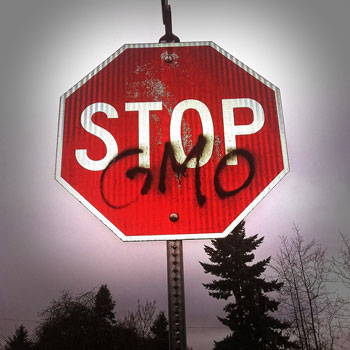
Unless of course it makes my cooking easier.
Source: Pixabay
And also you may do GMOs, which includes, as I've learned lately, yellow rice, which will save me the process of using curcumin to color my rice after I cook it. And also save millions of lives, but the usefulness of that is controversial, if we may judge from the numbers of anti-GMO protesters. That's why I think the curcumin-saving aspect of it should receive more attention.
And also, save 100,000 child deaths a year.
But also, instant yellow rice! Come on! You know you want that!
Curtain close
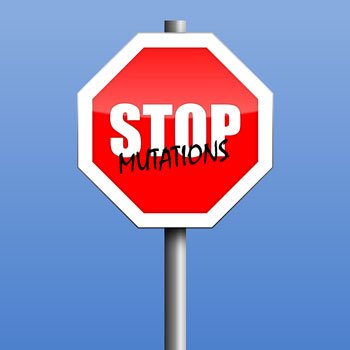
Source: Pixabay
A lot of controversial terms in this post. Recombinant DNA. Cloning. GMOs. But whether it's the insulin that allows the diabetic to live, or a new cure for cystic fibrosis[10], or the yellow rice that saves time cooking, or something about children dying in third world countries (I already forgot the details)—it all comes down to the same process.
A process that has been used for decades to keep people alive. It's nothing new, really, only the same basic procedure and rationale used more extensively.
We're all made of the same 4-letter words. All life on this planet. Can things go wrong when the sequence of these letters is messed with? Of course, as the aforementioned genetic diseases people are born with illustrate. And we can use our knowledge of this 4-letter code to fix those genetic mutations Nature randomly burdens us with.
Either that, or we can go out into the streets and protest against Nature with STOP MUTATIONS signs.
One of these methods will work.
REFERENCES
1. Krüger DH, Bickle TA. Bacteriophage survival: multiple mechanisms for avoiding the deoxyribonucleic acid restriction systems of their hosts. Microbiological Reviews. 1983;47(3):345-360. https://www.ncbi.nlm.nih.gov/pmc/articles/PMC281580/
2. Wikipedia contributors, "DNA methylation," Wikipedia, The Free Encyclopedia, https://en.wikipedia.org/w/index.php?title=DNA_methylation&oldid=823794048 (accessed February 4, 2018).
3. Thomas, C. M. and Summers, D. 2008. Bacterial Plasmids. eLS. http://onlinelibrary.wiley.com/doi/10.1002/9780470015902.a0000468.pub2/abstract
4. Wikipedia contributors, "Horizontal gene transfer," Wikipedia, The Free Encyclopedia, https://en.wikipedia.org/w/index.php?title=Horizontal_gene_transfer&oldid=823479283 (accessed February 4, 2018).
5. Wikipedia contributors, "Plasmid," Wikipedia, The Free Encyclopedia, https://en.wikipedia.org/w/index.php?title=Plasmid&oldid=823065457 (accessed February 4, 2018).
6. Froger A, Hall JE. Transformation of Plasmid DNA into E. coli Using the Heat Shock Method. Journal of Visualized Experiments : JoVE. 2007;(6):253. doi:10.3791/253. https://www.ncbi.nlm.nih.gov/pmc/articles/PMC2557105/
7. Wikipedia contributors, "DNA ligase," Wikipedia, The Free Encyclopedia, https://en.wikipedia.org/w/index.php?title=DNA_ligase&oldid=816710381 (accessed February 4, 2018).
8. Wikipedia contributors, "Recombinant DNA," Wikipedia, The Free Encyclopedia, https://en.wikipedia.org/w/index.php?title=Recombinant_DNA&oldid=823032532 (accessed February 4, 2018).
9. Wikipedia contributors, "Molecular cloning," Wikipedia, The Free Encyclopedia, https://en.wikipedia.org/w/index.php?title=Molecular_cloning&oldid=814094870 (accessed February 4, 2018).
10. Repeated nebulisation of non-viral CFTR gene therapy in patients with cystic fibrosis: A randomised, double-blind, placebo-controlled, phase 2b trial. Alton E.W.F.W., Armstrong D.K., Ashby D., Bayfield K.J., Bilton D., Bloomfield E.V., Boyd A.C., (...), Wolstenholme-Hogg P. (2015) The Lancet Respiratory Medicine, 3 (9) , art. no. 180 , pp. 684-691. http://www.thelancet.com/journals/lanres/article/PIIS2213-2600(15)00245-3/fulltext
Earlier Introduction to Biology episodes:
12: How a Boy From an Indian Village Broke the Code of Life and Won the Nobel Prize
11: The Most Beautiful Experiment In Biology
10: The Great GATC-by: The Most Famous Science Paper of the 20th Century
9: The Great Kitchen Blender Experiments: How DNA was proved to be the seat of heredity
8: Finding, Counting, and Ordering Genes Using Incredibly Sophisticated Biomolecular Megatechnology
7: Christmas Disease — Yes, it's real, 100% scientifically proven!
6: The Most Famous All-Nighter in the History of Genetics
5: Mendel's Lucky Number Seven — The law of genetics that almost wasn't
4: How Cells Use Logic To Do The Impossible
3 : Armchair Science — The Discovery of Proteins' Secondary Structure
2 : How Cell Membranes Form Spontaneously
1 : Eduard Buchner: The Man Who Killed Vitalism
steemSTEM is the go-to place for science on Steemit. Check it out at @steemstem or browse the #steemSTEM tag or chat live at steemit.chat or discord
Being A SteemStem Member
Nice write up but most modern labs rarely use Restriction enzyme digestion for cloning anymore. Restriction enzyme independent cloning such as Gibson Assembly is a more efficient way and does not require restriction sites.
Yup. The post (like the series in general) is more of a historical affair, going over important discoveries in biology. It's certainly not cutting-edge or 'this just out' material.
Hey thanks for the upvote!
Cheers!
👍
I use Gibson assembly when I generate most plasmids, but sometimes you can't. But you'd be surprised how few people use Gibson assembly or even understand it. It's very useful and simple, so you'd think nearly everyone generating plasmids would use it...
Happy to see your posts doing so well, man. You've been putting a ton of effort into them, and they look great.
:)
Golden rice is engineered to generate beta carotene (pre cursor to vitamin A) which is what gives it the yellow color.
Yes. I linked to @tking77798's post where he goes into detail and where in fact I learned about this.
Saves me the curcumin is what I care about! :P
Thanks for the link!
Awesome breakdown :)
I wish uptake of plasmids into DNA was easier, I remember wasting 6 months of my life on repeating this one process at one point :/
Nothing like repetition tho to drive a process home! :P
One thing for sure is this, scientific innovations and discoveries are geared towards improvement of life here on earth. However we all know there will always be the black sheep, the Judas, the bad guys who will use this innovations for selfish purposes and bring the whole intent on hot seat.
very useful information thank you
your post is very useful for everyone, especially for me you are my inspiration. I @boyhaqi69 hope you @alexander can share the experience for me because your past is my future
kalispera! fovero artho... kali sinexeia!